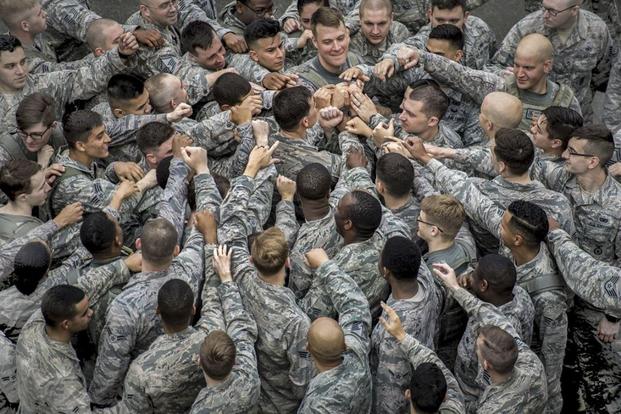NATIONAL HARBOR, Md. -- The U.S. Air Force could reach roughly 725,000 airmen and civilians across the active-duty, Guard and Reserve components with its proposal to increase to 386 operational squadrons, the head of the service's personnel center said Monday.
"When you go from 312 operational squadrons to 386 operational squadrons, what does that mean in terms of manning and where we're at?" Lt. Gen. Brian Kelly, commander of the Air Force Personnel Center at Joint Base San Antonio-Randolph, Texas, said here during the annual Air Force Association Air, Space and Cyber conference.
Air Force Secretary Heather Wilson earlier on Monday announced that the service intends to add 74 squadrons, with the bulk conducting command and control; intelligence, surveillance and reconnaissance; and tanker refueling operations.
"We aren't naive about how long it will take us to build the support and budget required for the force we need. It is a choice," she said at the conference outside Washington, D.C. "To face the world as it is, with a rapidly innovating adversary, the Air Force we need should have about 25 percent more operational squadrons in the 2025 to 2030 timeframe than the Air Force we have."
Related content:
- Air Force Wants to Surge Growth by More Than 70 New Squadrons
- F-15X and GenZ: Former Air Combat Command Chief on the Future Air Force
- AFA Air Space Cyber Conference
If the service maintains its projected growth, it expects to reach roughly 685,000 total force airmen, including civilians, over the next five years, Kelly said. With 74 additional squadrons -- which would require 40,000 personnel, according to initial estimates -- there could be between 725,000 and 740,000 personnel by 2030.
The Air Force drastically downsized in past years due to the budget cuts known as sequestration. It first signaled its intentions to grow the active-duty force to 350,000 airmen by 2024 in 2016.
"I'm convinced that the Air Force we need is going to be about 350,000 airmen," Air Force Chief of Staff Gen. David Goldfein said in a statement that first appeared in USA Today in 2016. "We got too small, too fast. We're too big an Air Force with too many programs for the budget that we have, and way too small an Air Force for what the nation is asking its Air Force to do."
The squadron announcement -- dubbed "The Air Force We Need" by Wilson -- redefines how airmen will be distributed. It remains unclear, however, how resources such as aircraft and infrastructure will accumulate over the next 12 years with the projected 25 percent growth.
Todd Harrison, director of the Aerospace Security Project at the Center for Strategic and International Studies, said achieving the 25 percent increase will be a large feat and will depend heavily on what types of aircraft are needed to sustain the Air Force's new goals.
"Right now, the Air Force spends about $53 [billion] per year on aircraft operations, training, and recruiting," he tweeted during Wilson's speech. "Increasing the number of squadrons by [roughly] 24 [percent] would probably add another $13 [billion] per year in these operating costs."
He added, "The acquisition costs of adding more squadrons depends heavily on what type of aircraft are procured. [I] can't begin to hazard a guess at this without knowing the mix of aircraft."
-- Oriana Pawlyk can be reached at oriana.pawlyk@military.com. Follow her on Twitter at @Oriana0214.













